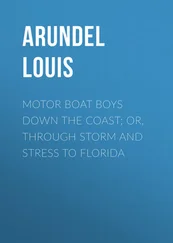From a practical perspective, I suggest going from the bottom up instead. I've coached people from both directions, and in terms of lasting value, I can honestly say that getting someone in control of the details of his or her current physical world, and then elevating the focus from there, has never missed.
Trying to manage from the top down, when the bottom is out of control, may be the least effective approach.
The primary reason to work from this bottom-up direction is that it clears the psychic decks to begin with, allowing your creative attention to focus on the more meaningful and elusive visions that you may need to challenge yourself to identify. Also, this particular method has a high degree of flexibility and freedom, and it includes a thinking and organizing practice that is universal and effective no matter what it's focused on. That makes it worth learning, no matter what the actual content you're dealing with at the moment may be. Change your mind, and this process will help you adjust with maximum speed. And knowing that you have that ability will give you permission to play a bigger game. It's truly empowering.
While the "50,000-foot level" is obviously the most important context within which to set priorities, experience has shown me that when we understand and implement all the levels of work in which we are engaged, especially the runway and 10,000-foot levels, we gain greater freedom and resources to do the bigger work that we're all about. Although a bottom-up approach is not a key conceptual priority, from a practical perspective it's a critical factor in achieving a balanced, productive, and comfortable life.
Runway The first thing to do is make sure your action lists are complete, which in itself can be quite a task. Those who focus on gathering and objectifying all of those items discover that there are many they've forgotten, misplaced, or just not recognized.
Aside from your calendar, if you don't have at least fifty next actions and waiting-fors, including all the agendas for people and meetings, I would be skeptical about whether you really had all of them. If you've followed through rigorously with the steps and suggestions in part 2, though, you may have them already. If not, and you do want to get this level up-to-date, set aside some time to work through chapters 4 through 6 in real implementation mode.
When you've finished getting this level of control current, you'll automatically have a more grounded sense of immediate priorities, which is almost impossible to achieve otherwise.
10,000 Feet Finalize your "Projects" list. Does it truly capture all the commitments you have that will require more than one action to get done? That will define the boundaries of the kind of week-to-week operational world you're in and allow you to relax your thinking for longer intervals.
Taking the inventory of your current work at all levels will automatically produce greater focus, alignment, and sense of priorities.
If you make a complete list of all of the things you want to have happen in your life and work at this level, you'll discover that there are actions you need to do that you hadn't realized. Just creating this objective inventory will give you a firmer basis on which to make decisions about what to do when you have discretionary time. Invariably when people get their "Projects" list up-to-date, they discover there are several things that could be done readily to move things they care about forward.
Very few people have this clear data defined and available to themselves in some objective form. Before any discussion about what should be done this afternoon can take place, this information must be at hand.
Again, if you've been putting into practice the methodology of Getting Things Done, your "Projects" list will be where it needs to be. For most of our coaching clients, it takes ten to fifteen hours of collecting, processing, and organizing to get to the point of trusting the thoroughness of their inventory.
20,000 Feet This is the level of "current job responsibilities." What are the "hats" you wear? Professionally, this would relate to your current position and work. Personally, it would include the roles you've taken on in your family, in your community, and of course with yourself as a functioning person.
You may have some of these roles already defined and written out. If you've recently taken a new position and there's an agreement or contract about your areas of responsibility, that would certainly be a good start. If you've done any kind of personal goal-setting and values-clarifying exercises in the past and still have any materials you created then, add those to the mix.
Next I recommend that you make and keep a list called "Areas of Focus." You might like to separate this into "Professional" and "Personal" sublists, in which case you'll want to use them both equally for a consistent review This is one of the most useful checklists you can create for your own self-management. It won't require the kind of once-a-week recalibration that the "Projects" list will; more likely it will have meaning on a longer recursion cycle. Depending on the speed of change in some of the more important areas of your life and work, this should be used as a trigger for potential new projects every one to three months.
If you're not totally sure what your job is, it will always feel overwhelming.
You probably have somewhere between four and seven key areas of responsibility in your work, and a similar number person-ally. Your job may include things like staff development, systems design, long-range planning, administrative support, marketing, and scheduling, or responsibility for facilities, fulfillment, quality control, asset management, and so on. If you're your own business, your attention will be on many more areas than if you have a very specialized function in a large organization. The rest of your life might entail areas of focus such as parenting, partnering, church, health, community service, home management, financial management, self-development, creative expression, and so forth.
The operational purpose of the "Areas of Focus" list is to ensure that you have all your projects and next actions defined, so you can manage your responsibilities appropriately. If you were to create an accounting of those and evaluate them objectively, in terms of what you're doing and should be doing, you'll undoubtedly uncover projects you need to add to your "Projects" list. You may, in reviewing the list, decide that some areas are just fine and are being taken care of. Then again, you may realize that something has been "bugging" you in one area and that a project should be created to shore it up. "Areas of Focus" is really just a more abstract and refined version of the "Triggers" list we covered earlier.
Every client I have coached in the last twenty years has uncovered at least one important gap at this level of discussion. For instance, a common "hat" a manager or executive wears is "staff development." Upon reflection, most realize they need to add a project or two in that area, such as "Upgrade our performance review process."
A discussion of "priorities" would have to incorporate all of these levels of current agreements between yourself and others. If you get this "job description" checklist in play and keep it current, you'll probably be more relaxed and in control than most people in our culture. It will certainly go a long way toward moving you from hope to trust as you make the necessary on-the-run choices about what to do.
30,000 to 50,000+ Feet Whereas the three lower levels have mostly to do with the current state of things—your actions, projects, and areas of responsibility—from here up the factors of the future and your direction and intentions are primary. There is still an inventory to take at these plateaus, but it's more about "What is true right now about where I've decided I'm going and how I'm going to get there?" This can range from one-year goals in your job ("30,000 feet") to a three-year vision for your career and personal net worth ("40,000 feet") to intuiting your life purpose and how to maximize its expression ("50,000+ feet").
Читать дальше











